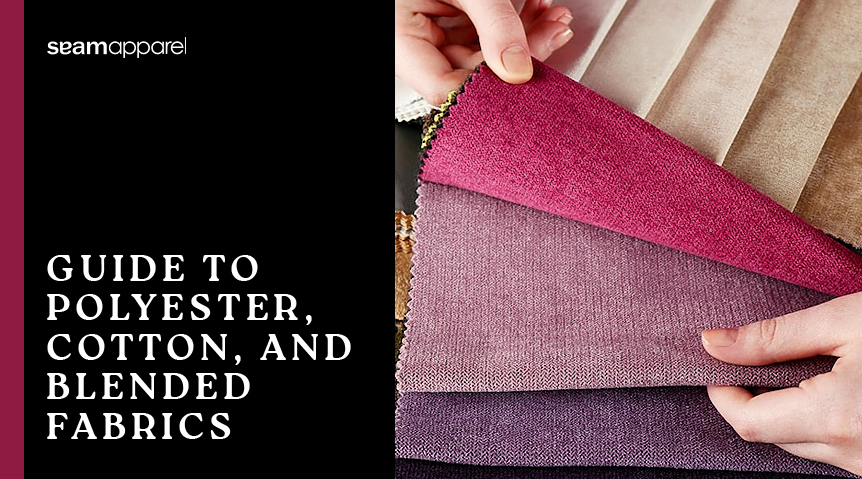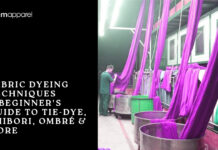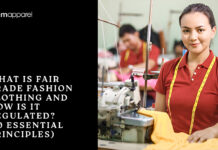It’s crucial to decide what kind of fabric you want before looking for how to start a t-shirt business. You constantly dress in T-shirts. You may even wear a casual outfit every day. Your t-shirt is probably made of either blended cotton or polyester, whether it has a brand on it or not.
A soft cloth material must be located as well. Nobody wants to purchase a garment that is irritating and uncomfortable! The first step is to figure out how to make shirts comfortable and print-ready. The decision of what fabric to use for your products is one of the many decisions you must make as to the type of t-shirt prints.
What are the distinctions between fabrics made of 100% cotton and polyester blend? Let’s start by clarifying that a cotton poly blend fabric is exactly what its name implies: a fabric consisting of polyester and cotton fabric.
The most common ratio fluctuates, and the typical combination of cotton vs cotton-poly blends is 65% cotton and 35% polyester. 50/50 mixtures are also widely available. The blend is intended to combine the benefits of polyester and cotton fibers into a single fabric.
We’ll start by going through the various fabric types such as cotton and polyester fabrics and blend fabrics that suit the best. Finding the finest alternative for your sales and client satisfaction will be made easier with the help of this.
The Fabric Types: A Beginner’s Guide
Fabrics and other materials used to make garments are collectively referred to as “cloth” in the textile business. To make threads, raw fibers must first be twisted together. Following the weaving or knitting of these strands, a usable fabric is produced that can be cut, sewn, and transformed into clothing.
The most common natural fiber is cotton, and the most widely used synthetic fiber is polyester. Fibers can be either synthetic or natural. Each type of fiber is distinct and possesses diverse qualities; some are strong and thick, while others are supple and elastic. Blends made of different fibers frequently have a combination of attractive features.
The type of fiber used in clothing is determined by its intended usage. For instance, a synthetic fiber with moisture-wicking properties would be better suitable for a football jersey than a material like wool that absorbs heat.
Cotton


The natural fiber that is produced the most on earth is cotton. It is one of the most widely used textiles for clothing since it is a fabric with a reputation for comfort and toughness.
Cotton is a flexible fiber that may be knitted or woven into a wide variety of fabrics, including denim, flannel, jersey, and more. Of course, the feel and wear of each one vary significantly.
The gentleness and breathability of all cotton fabrics make them perfect for those with sensitive skin, hot climates, and hot weather.
Cotton also doesn’t cling. Therefore, use cotton if you desire a looser fit and don’t want to sell form-fitting clothing in your business. Though 100% cotton dries slowly, so it’s not the best material for activewear.
For DTG printing, cotton makes an excellent surface. Therefore, choose clothes made of 100% cotton if you want your t-shirt design placement guide to remain opaque and crisp. Remember that DTG prints don’t appear as sharply on heavy cotton apparel (like hoodies) as they do on t-shirts.
Due to its exceptional durability, high-quality cotton is less likely to rip or tear by mistake. But cotton polyester material mixtures are more resilient than pure cotton. It is susceptible to shrinking under high temperatures, just like the majority of natural materials. Therefore, avoid using too much detergent and wash cotton shirts in cold water to prevent damaging the fabric. To avoid color fading, select the delicate setting on your washing machine.
How Is a Cotton Fabric Made?
Making cotton into a textile requires three steps:
- Ginning: This procedure separates the cotton from the seeds that are acquired from cotton bolls.
- Spinning: Using this method, the fibers acquired through combing are spun into yarn.
- Weaving: The yarn is finally woven into the fabric using two different kinds of yarn
Characteristics Of Cotton Fabric
Cotton is suited for fabric because of a variety of qualities and traits, such as:
- It is cozy to wear cotton.
- Cotton is a naturally fluffy and fuzzy plant, and cotton fabric keeps that soft feel.
- Natural fiber Cotton is produced from cotton fibers, a naturally occurring plant substance.
- Cotton can drain moisture away from the skin because of the space between its fibers, making cotton an absorbent material.
- Cotton fabric is breathable due to the spaces between the fibers.
good drapes Cotton hangs from the body in a form that fits it organically. - Strong and gets stronger when wet, cotton is a durable material. Cotton is ideal for fashion since it makes clothes endure longer, which is the key to any sustainable wardrobe.
- When cotton is wet, it retains its strength, so you can trust the washing machine to perform its job without worrying about fading or wear and tear.
- Cotton fibers absorb color well, making it simple to dye and print
- Cotton does not conduct electricity, therefore you won’t experience static shocks like with some synthetic textiles.
Cotton Is Most Used For:
Textiles and fabrics: Cotton has been used for thousands of years to create a range of woven fabrics, such as clothing, denim, canvas, flannel, and more.
Clothing: Cotton is ideal for clothes thanks to its qualities. It works well for T-shirts, jeans, skirts, sweatshirts, and just about any other type of apparel, you can imagine because it is soft, strong, breathable, and simple to mass-make.
House textiles: Considering how soft and absorbent cotton is, it is frequently used in bed sheets and towels.
Home furnishings: Cotton is also used in upholstery, curtains, rugs, tablecloths, and other household items.
Cottonseed oil: Cotton seed oil, a byproduct of the cotton production process, is used in cosmetics, soap, candles, and biofuels as well as in salad dressings and margarine for human consumption.
Money: Some currencies, like the US dollar, use cotton as a key component.
Types of Cotton Fabric
Acala Cotton
In the San Joaquin Valley’s ideal climate, a particular kind of cotton grown solely in California is created. Cotton from Upland is among the best in the world. Due to its expanding requirements, it, unfortunately, tends to be more expensive.
Egyptian Cotton
Certain varieties of either LS or ELS cotton are referred to as “Egyptian cotton” in this context. One of the longest and most expensive types of cotton is Giza 45 cotton, which is over 45 millimeters (1.77 inches) long.
Pima Cotton
Early in the 20th century, the United States government collaborated with the Pima Indians to develop Pima cotton, a variety of ELS cotton. One of the strongest varieties of cotton is thought to be this one.
Upland Cotton (Gossypium Hirsutum)
Upland cotton is claimed to make up 90% of the world’s cotton supply because it produces a lot and is simple to grow, making it the variety of cotton you’ll most frequently see in stores. South and Central America are where they originated.
Cotton: Printing
Cotton t-shirt materials work well for printing and are frequently chosen by clients. Cotton fabrics work best with screen printers that employ water-based inks.
Cotton prints beautifully with DTG as well. This procedure functions similarly to a digital printer you may see in an office. Unlike other forms, it offers the fabric intricate designs and color variety.
Fabrics made entirely of cotton are suitable for this style of printing. DTG exclusively employs water-based inks. 100% cotton is the most efficient way to achieve the best outcomes.
Cotton t-shirts are typically extremely affordable. They could only cost a few dollars, depending on the manufacturer and design.
Polyester Fabric
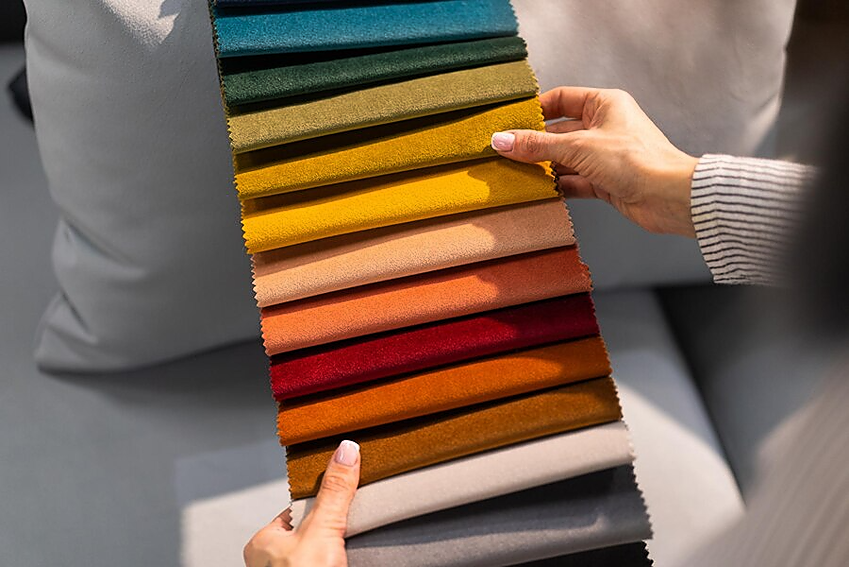

A synthetic cloth called polyester is typically made from petroleum. One of the most widely used fabrics in the world, this material is utilized in a huge variety of commercial and non-commercial settings.
Chemically, molecules with the ester functional group make up the majority of polyester polymers. The majority of synthetic polyester fibers as well as a few plant-based polyester fibers are produced using ethylene, a chemical compound found in petroleum but also available from other sources. Even though some types of polyester are biodegradable, most of them are not, and polyester use and production contribute to global pollution.
How Is The Polyester Made?
Purified terephthalic acid and petroleum-derived ethylene glycol are polymerized to create polyester fabric, which melts to form polyethylene terephthalate. (PET). To make semi-crystalline fibers that are occasionally chemically treated before being woven together to create polyester fabric, manufacturers force the molten PET through a spinneret.
Characteristics Of Polyester Fabric
All textiles will have distinctive qualities that define their optimal application, whether it is faux leather, velvet, off-white organza, or burgundy broadcloth. The following are some of the most notable qualities of polyester:
- Enduring: Because polyester fibers are so tough, unlike cotton and other natural fabrics, they do not easily rip, stretch, or pill. Because of its durability, polyester clothing doesn’t need special maintenance and can easily withstand damage from machine washing. Polyester fabric is particularly well-liked for outdoor apparel due to its resilience.
- It can withstand dampness: Polyester is a common material for outdoor clothes and equipment (like tents) because it resists liquid droplets, which means the fabric will drain away moisture rather than soak it up. Polyester is also stain-resistant because of its moisture resistance. Polyester is less breathable than cotton, nevertheless, due to its moisture resistance. When you perspire while wearing polyester, the cloth will retain the moisture rather than wick it away, making you uncomfortable and sticky.
- It maintains its form: Polyester textiles are less likely to wrinkle and will maintain their form, drape, and stiffness better than linen and cotton fabrics, which must be ironed. In the 1970s, polyester became especially well-liked as a replacement for garments that needed frequent washing and ironing to prevent wrinkling.
- It may be rough: The feel of polyester isn’t particularly luxurious, unlike that of many natural materials; polyester that is created cheaply may feel a little rough on skin that is already sensitive. But there are a variety of ways to make and weave polyester fabric, and these variations will have an impact on how coarse or smooth it is. China silk fabric, one of the different varieties of polyester, is virtually as silky as satin or natural silk.
- It isn’t biodegradable: As a result of their biodegradability, many natural fibers won’t accumulate in landfills and will decompose over time. The majority of polyester yarns have a very different impact on the environment than other types of yarns since they are often not biodegradable and are difficult to degrade.
Types of Polyester
Understanding the three main varieties of polyester fabric can help you better understand this material.
- Ethylene Polyester
The most widely used kind of polyester on the market is PET or ethylene polyester. Even though there are different kinds of polyester, “polyester” is typically used to refer to PET.
- Polyester Made From Plants
The fact that this fabric is biodegradable is the fundamental benefit of plant-based polyester. However, compared to its PET or PCDT textile counterparts, plant-based polyester may be more expensive to produce and less robust.
- Polyester PCDT
Even though PCDT polyester is less common than PET polyester, it is more elastic, making it perfect for some applications. Due to its higher durability compared to PET polyester, PCDT polyester is typically chosen for heavy-duty applications including upholstery and drapes.
Polyester: Printing
On polyester materials, heat transfer printing performs particularly well. In this process, a design is made on a computer, then printed on adhesive vinyl. By applying heat to the design, you can incorporate it into the fabric.
Due to its ability to print for business t-shirt design ideas on a variety of materials, this is one of the most adaptable printing processes. The transfers adhere best to synthetic materials since they are plastic.
Polyester can be successfully sublimated as well. With this innovative procedure, colors are melted into the fabric. This is used as an alternative to transferring printing, which involves covering the fabric with a new layer.
However, only synthetic textiles can be used with this technique. If not, the colors wouldn’t stick together. Polyester is therefore the best material for sublimation.
Additionally, polyester is typically affordable. Its pricing may change depending on the company and the goods. Additionally, it frequently costs a little less than cotton.
Blended Fabric
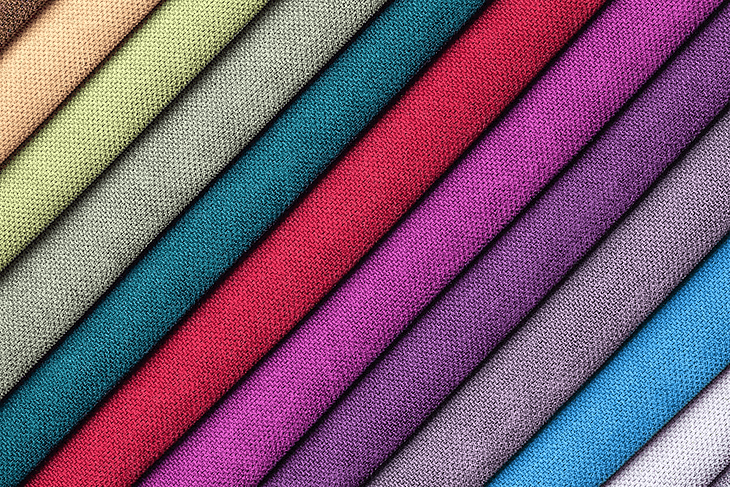

The method of blending is used to create various yarns in the textile industry by combining multiple fibers with various origins. Blended fibers might come from many sources and have varying compositions, lengths, thicknesses, and colors.
How Are Blended Fabrics Produced?
By combining two or more different types of staple fibers to create one yarn, blends are frequently created. So, to produce yarn, many fibers are twisted together. Depending on the outcome or benefits you’re after — performance, cost, or aesthetics — these fibers might come in a variety of forms.
Bale mixing, flock blending, web blending, sliver blending, fiber blending, and roving blending are some examples of the several types of blending procedures.
Characteristics Of Blended Fabrics
A blended fabric combines the natural properties of two fibers to create a new fabric with all the necessary properties.
The most popular blends developed today are those that include natural and synthetic fibers.
Natural fibers are strong, breathable, absorbent, biodegradable, and allergy-free. These are their positive traits. Their drawbacks include their high cost, need for constant upkeep, fragility, and quick shrinkage.
On the other hand, synthetic fibers are good at repelling water and are therefore less likely to bleed. They are also sturdy, resilient, elastic, and excellent at holding their shape. Their drawbacks include the fact that they aren’t biodegradable and are prone to skin sensitivities.
Benefits of Blending Fabrics
Each type of fiber, whether synthetic or natural, has advantages and disadvantages. By blending different fiber properties, we can highlight their positive traits and downplay their negative ones.
- Blending makes the fabric perform better. For instance, a cotton polyester blend fiber combination produces less creasing and better absorbency. Additionally, it enhances the fabric’s feel and texture.
- Blending can occasionally bring down the price of the cloth. Wool, for instance, is a pricey fiber. But the price of the cloth is decreased when wool is combined with a less expensive polyester blend.
- Cross-dye effects can also result from blending.
- By making up for fiber variances, it also optimizes the raw material for spinning and finishing.
- The durability of the product is also increased by mixing. A fabric’s lifetime is unquestionably increased when strong, resilient synthetic fibers are combined with delicate natural fibers like silk.
Types Of Different Blended Fabrics
Despite the market’s availability of hundreds of different fabric combinations, the following combinations are the most widely used for printed clothing:
Cotton-Poly Mix Fabric (65/35 And 50/50)
Choosing a cotton-polyester blend will give you the best of both worlds if you can’t decide between poly-cotton blends.
Cotton and polyester blended fabric can be used to create everything from clothing to bedding. This blend is simpler to wash and dry because polyester does not shrink or alter shape as cotton does. Clothing created from polyester and cotton blend is also more breathable than clothing made entirely of polyester because of the cotton content in the mixture.
The best thing is that this mixture offers a wonderful background for vibrant, colorful artwork.
A Blend Of Polyester, Cotton, And Rayon (50/25/25)
A semi-synthetic fiber called rayon contains the ideal ratios of rayon, cotton, and polyester blend fabric. This fabric makes for soft, elastic, and robust clothing. This well-known tri-blend makes the ideal material for loose-fitting clothing and is adored for its cuddly feel.
DTG prints on tri-blends will have a supposedly vintage feel because of the textiles’ looser weave and mix. It’s because the fabric of the clothing partially reveals through the ink.
A Blend Of Polyester And Spandex (85/15)
The elasticity of spandex, sometimes referred to as elastane or lycra, is what makes it such a popular synthetic fiber. When mixed with cotton, spandex creates a fabric that is both pleasant to the touch and long-lasting. Activewear most frequently uses polyester-spandex blends because spandex is elastic and can keep its form while polyester is more robust.
Blend: Printing
These blends are an excellent choice for embroidery because they frequently have a lot of durabilities. It is more likely to succeed if the cloth is sturdy. The fabric will resist being pierced by needles as long as the weave is tight and strong.
The expenses of cotton and polyester blend fabric are balanced out by blends. The cost of polyester is higher than that of cotton. As opposed to using only cotton, combining the two lowers the price of the final item.
For instance, the production of poly-cotton involves other processes as well. Compared to 100% cotton fabrics, this increases the range of materials accessible. The most economical choice is made up of textiles that are 65% polyester and 35% cotton.
How To Pick The Best T-Shirt Fabric
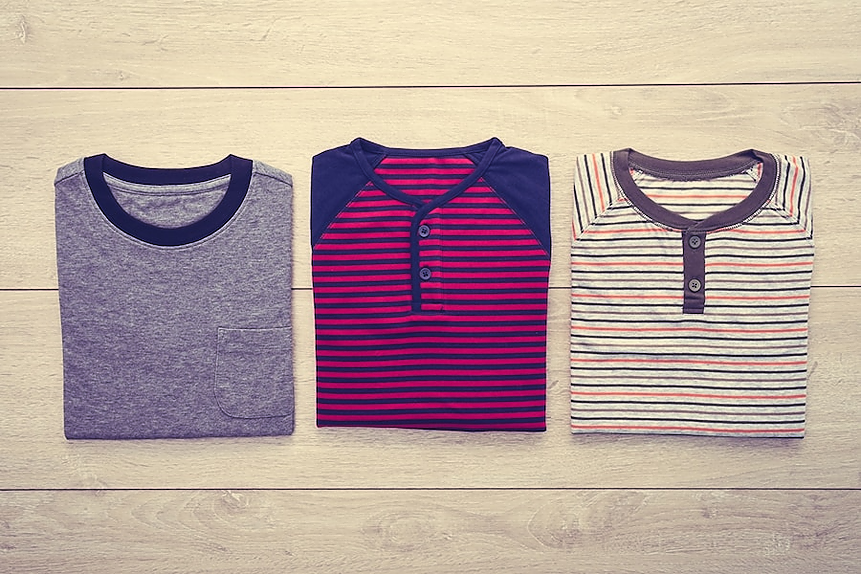

You must decide on the type of printing for your t-shirts before selecting a fabric. Here are five things to take into account when choosing a surface to print on.
- Determine the T-shirt Specifications
Identifying the characteristics you want in t-shirt materials is the first step. This includes characteristics like softness, odor resistance, and breathability.
- Select a Printing Strategy
It’s also critical to be aware of the printing technique you’re interested in. Direct-to-garment printing, screen printing, sublimation printing, and embroidery are examples of this.
- Choose Your Budget
Decide how much you want to spend next. It might be costly to buy high-quality apparel. It is crucial to be aware of your spending limit because of this.
- Select an Effective Style
If the garment has a purpose, you will need to ascertain it. Do they relate to a certain occasion? They’ll be worn as a uniform, yes. Can it be purchased as a product? You can choose the fashion that best suits you with the aid of this.
- Be Aware of Your Market
As a last consideration, consider the type of wearer. Their age and sense of fashion are among these. You may choose the ideal t-shirt textiles for a particular individual and situation by being aware of these characteristics.
FAQs
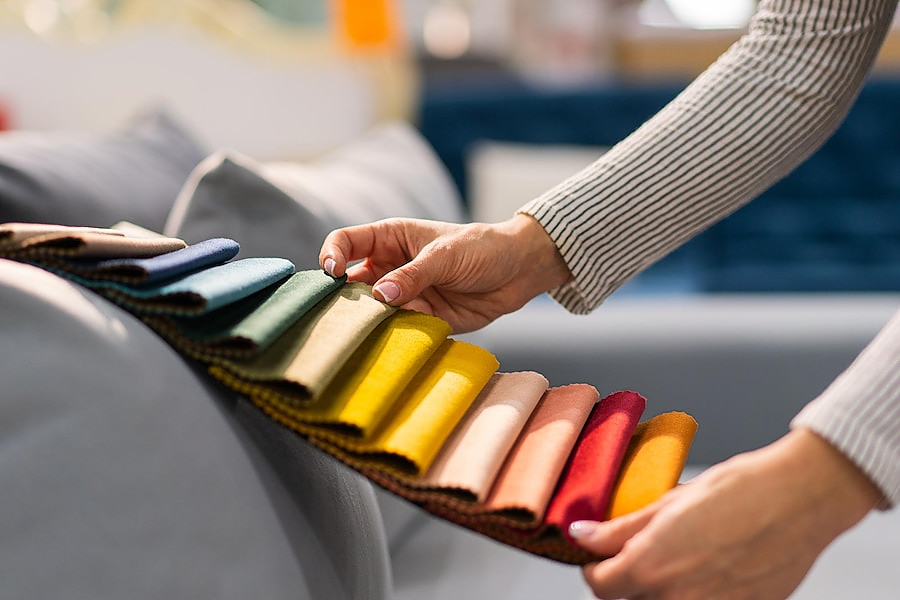

What is a cotton-polyester fabric blend?
The ideal ratio of rayon, cotton, and polyester are used to create the semi-synthetic fiber known as rayon. Although robust, the clothing manufactured from this material is soft and elastic. This renowned tri-blend is adored for its cuddly feel and makes the ideal fabric for loose-fitting clothing.
How much are 60 cotton and 40 polyesters?
60% cotton and 40% polyester are firmly woven into cotton broadcloth, a plain-weave fabric. This 58/60″ wide, 7oz per linear yard, light to medium weight fabric is perfect for all kinds of crafts and clothing because of its soft, breathable feel.
Is polyester warm or cold to wear?
It’s difficult for polyester, a synthetic fabric, to breathe. You will feel hot and sticky as a result since it will trap heat and moisture on your skin.
Final Words
It comes down to personal opinion because each of the three fabric kinds has benefits and drawbacks. Thought should be given to the fabric and items you select as a store owner because they represent your brand. For each fabric garment, you should also provide care recommendations so that customers can extend the life of the item.

